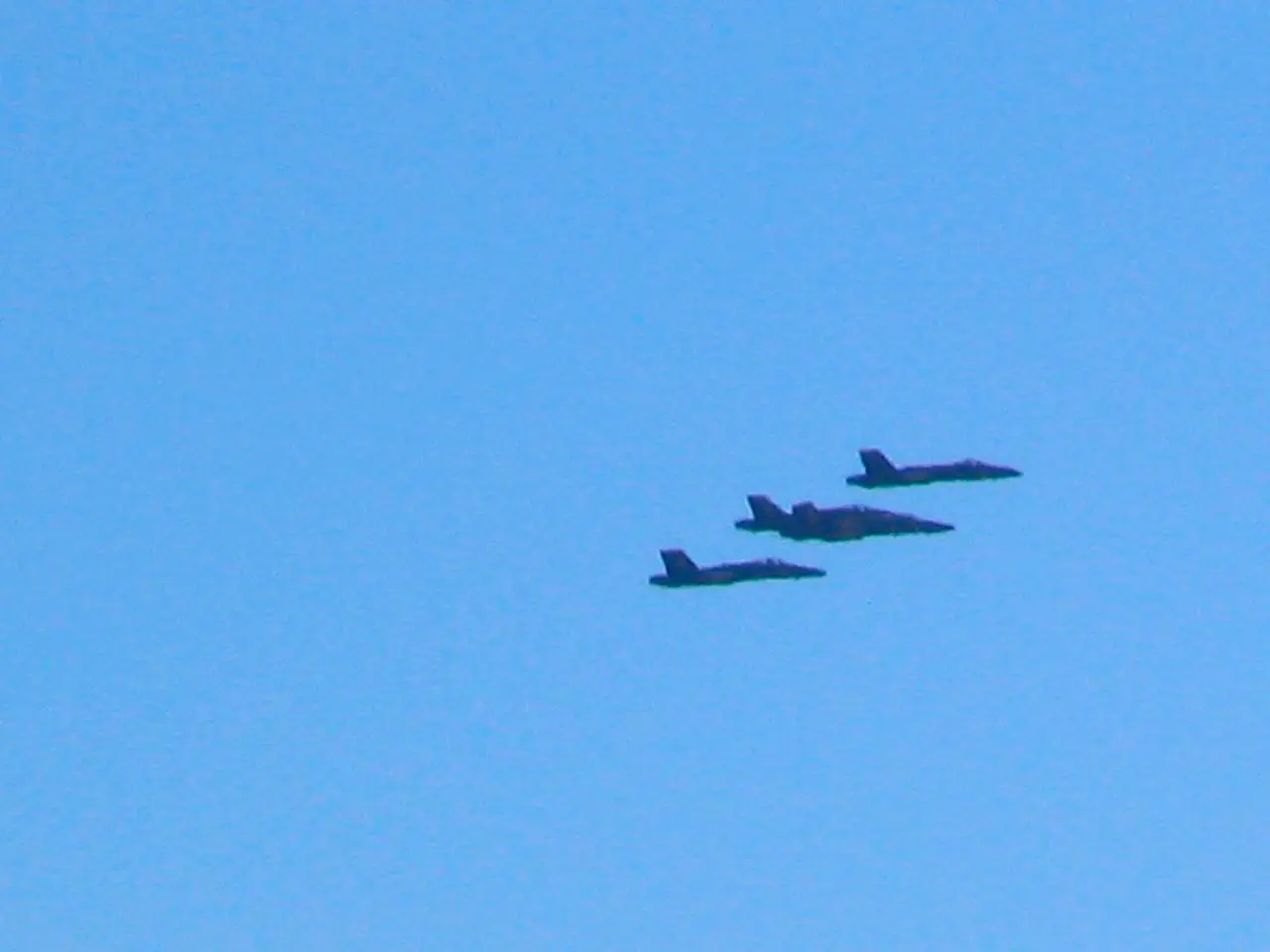Russian-made drone, Geran-3, evades Ukrainian air defenses, presenting a challenge for Ukrainian forces. - Russian Drone Jet Deception Fools Ukrainian Air Defense Systems (According to Geran-3)
The Geran-3 drone, a turbojet-powered loitering munition, is causing challenges for traditional air defense methods in the ongoing conflict in Ukraine. Reaching speeds of up to 520–600 km/h and operating at altitudes around 9,000 meters, the Geran-3 is beyond the reach of many standard anti-drone systems and small arms.
Key Countermeasures and Defensive Approaches
Countries are adapting their strategies to counter the Geran-3. Key countermeasures include:
- Electronic Warfare (EW): Ukraine utilises EW to disrupt or neutralise drone control signals, which has been partially effective in reducing the impact of Shahed and Geran variants.
- Interceptor Drones: Ukraine has deployed dedicated interceptor drones like the ODIN Win_Hit, which can cruise at 200–220 km/h and attack speeds up to 280–300 km/h. These interceptors operate autonomously and use precise targeting to shoot down incoming drones.
- Mobile Air Defense Systems: Combined missile systems and mobile fire teams are used to engage the drones, although encountering limitations due to the Geran-3’s speed and altitude.
- Layered Defense: The combination of multiple methods—EW, interceptor drones, and missile systems—has allowed Ukrainian forces to neutralise a significant portion of attacking drones.
Challenges Countries Face with Jet Drones like the Geran-3
The Geran-3's high speed and altitude pose significant challenges. It can fly at speeds nearly twice that of older drones and at altitudes that complicate radar detection and engagement by standard short-range anti-drone weapons. Its radar profile resembles that of cruise missiles, making it more difficult for conventional air defenses to discriminate and target it effectively. Acoustic detection is also complicated by its turbojet engine's high-pitched sound.
Responses to These Challenges
In response, countries are:
- Developing specialized interceptor drones with autonomous targeting to counter fast incoming threats.
- Enhancing electronic warfare capabilities to disrupt drone operation and command links.
- Updating and integrating multi-layered air defense networks that combine kinetic and non-kinetic methods to respond flexibly to drone swarm tactics.
- Researching new detection technologies and interception methods tailored to detect and engage fast, high-altitude drones with cruise missile-like signatures.
In summary, countering jet-powered drones like the Geran-3 involves a multifaceted approach combining electronic warfare, dedicated high-speed interceptor drones, and adaptable layered air defenses, all of which countries are actively developing and deploying to meet these emerging aerial threats.
- The community policy and politics within countries are focusing on growing their industry, finance, and technology sectors to fund and develop specialized interceptor drones and enhance electronic warfare capabilities.
- In the field of aerospace technology, there is a heightened interest in researching new detection technologies and interception methods tailored to counter the unique radar profile and high-speed capabilities of jet-powered drones like the Geran-3.
- Policy-and-legislation action is underway to address war-and-conflicts challenges posed by these high-speed drones, including updates to employment policy to support the integration of multi-layered air defense networks.
- To tackle the challenges posed by jet drones, the employment policy within countries' aerospace and defense industries is adjusting to account for the need for experts in radar detection, high-speed interception, and strategic defense planning.








